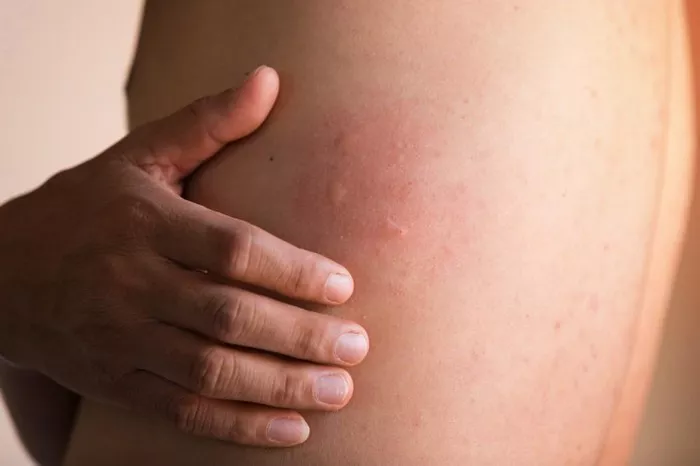Delayed pressure urticaria (DPU) is a rare form of physical urticaria characterized by the development of painful, swollen, and red hives (wheals) on the skin in response to sustained pressure. This condition, which often appears several hours after the pressure stimulus, can significantly impact the quality of life of those affected due to its chronic nature and the discomfort it causes. Despite its relatively low prevalence, understanding DPU is crucial for healthcare providers to diagnose and manage the condition effectively. This article delves into the pathophysiology, clinical features, diagnosis, and management strategies for DPU, aiming to provide a comprehensive overview for medical professionals and interested readers alike.
Pathophysiology
The exact mechanisms underlying delayed pressure urticaria remain elusive, though several hypotheses have been proposed. One prevalent theory suggests that the condition is a result of an abnormal immune response. Pressure applied to the skin may cause mechanical stress that leads to the release of pro-inflammatory mediators, such as histamine, leukotrienes, and cytokines, from mast cells and other immune cells. These mediators then cause the characteristic wheals and angioedema associated with DPU.
Another aspect of the pathophysiology may involve the activation of the kallikrein-kinin system, which leads to increased vascular permeability and the subsequent development of edema. Genetic factors are also considered to play a role, as DPU can occasionally run in families, indicating a potential hereditary component.
Clinical Features
Delayed pressure urticaria is often distinguished by the delayed onset of symptoms, typically appearing 4 to 6 hours after the application of pressure. The affected areas usually include sites subjected to prolonged pressure such as the buttocks after sitting, the soles of the feet after walking or standing, and the hands after carrying heavy objects. The wheals can last from 8 to 72 hours and are often accompanied by deep tissue swelling and pain, which can be severe enough to limit daily activities.
Patients with DPU may also experience systemic symptoms such as fatigue, fever, chills, and general malaise, particularly during severe episodes. The condition is chronic, with fluctuating periods of exacerbation and remission, often triggered by physical activities or tasks involving sustained pressure on certain body parts.
Diagnosis
Diagnosing delayed pressure urticaria can be challenging due to its delayed onset and the variability of symptoms. A thorough patient history and physical examination are essential. Patients often report a history of delayed skin reactions following pressure stimuli, which can be a key diagnostic clue.
The pressure challenge test is a commonly used diagnostic tool. This involves applying a known pressure to the skin, typically with a standardized weight or device, for a specified duration (usually 10-20 minutes). The test site is then monitored for several hours to observe the development of wheals and other symptoms.
In some cases, additional diagnostic tests may be required to rule out other forms of physical urticaria or related conditions. These tests can include blood tests to check for markers of inflammation, skin biopsy to examine tissue histology, and imaging studies if deeper tissue involvement is suspected.
SEE ALSO: What Is Exercise-Induced Urticaria
Management and Treatment
Managing delayed pressure urticaria requires a multifaceted approach, as there is no single definitive cure for the condition. Treatment strategies focus on symptom relief, reducing the frequency and severity of flare-ups, and improving the patient’s quality of life.
Avoidance of Triggers: Identifying and avoiding pressure triggers is a primary strategy. Patients are advised to modify their activities to minimize prolonged pressure on affected areas. This can include using cushioned seating, avoiding carrying heavy objects, and wearing supportive footwear.
Pharmacological Treatments:
- Antihistamines: Second-generation antihistamines are often the first line of treatment. These medications can help reduce itching and swelling by blocking the action of histamine.
- Leukotriene Receptor Antagonists: Medications such as montelukast can be used to reduce inflammation and are sometimes used in combination with antihistamines for better symptom control.
- Corticosteroids: Short courses of oral corticosteroids may be prescribed during severe flare-ups to reduce inflammation and provide rapid relief. However, long-term use is generally avoided due to potential side effects.
- Biologics: In refractory cases, biologic agents such as omalizumab, which targets immunoglobulin E (IgE), have shown promise in reducing symptoms and improving patient outcomes.
Non-Pharmacological Treatments:
Physical Therapy: Engaging in physical therapy can help patients manage symptoms through tailored exercise programs that avoid excessive pressure on sensitive areas.
Psychological Support: Chronic urticaria can significantly impact mental health, leading to anxiety and depression. Counseling and support groups can be beneficial for patients struggling with the psychological burden of the disease.
Emerging Therapies:
Research into new treatment options is ongoing, with promising results from studies exploring the use of novel biologic agents and targeted therapies. These treatments aim to address the underlying immunological mechanisms of DPU and offer hope for more effective and long-term symptom management.
Impact on Quality of Life
The chronic and painful nature of delayed pressure urticaria can significantly impair the quality of life for those affected. Daily activities, work, and social interactions can be disrupted by the need to avoid pressure triggers and manage flare-ups. The condition can also lead to emotional distress, including feelings of frustration, embarrassment, and social isolation.
Effective management of DPU requires a holistic approach that not only addresses physical symptoms but also provides support for the emotional and psychological challenges faced by patients. Educating patients about the condition, involving them in their care plans, and providing access to supportive resources are crucial components of comprehensive care.
Conclusion
Delayed pressure urticaria is a complex and often debilitating condition that requires careful diagnosis and a tailored management approach. While the exact mechanisms remain incompletely understood, advances in research are providing new insights and potential treatment options. By combining pharmacological treatments, lifestyle modifications, and psychological support, healthcare providers can help patients manage their symptoms and improve their quality of life. Ongoing research and patient education are essential to further enhance our understanding and treatment of this challenging condition.
Related Topics:

























